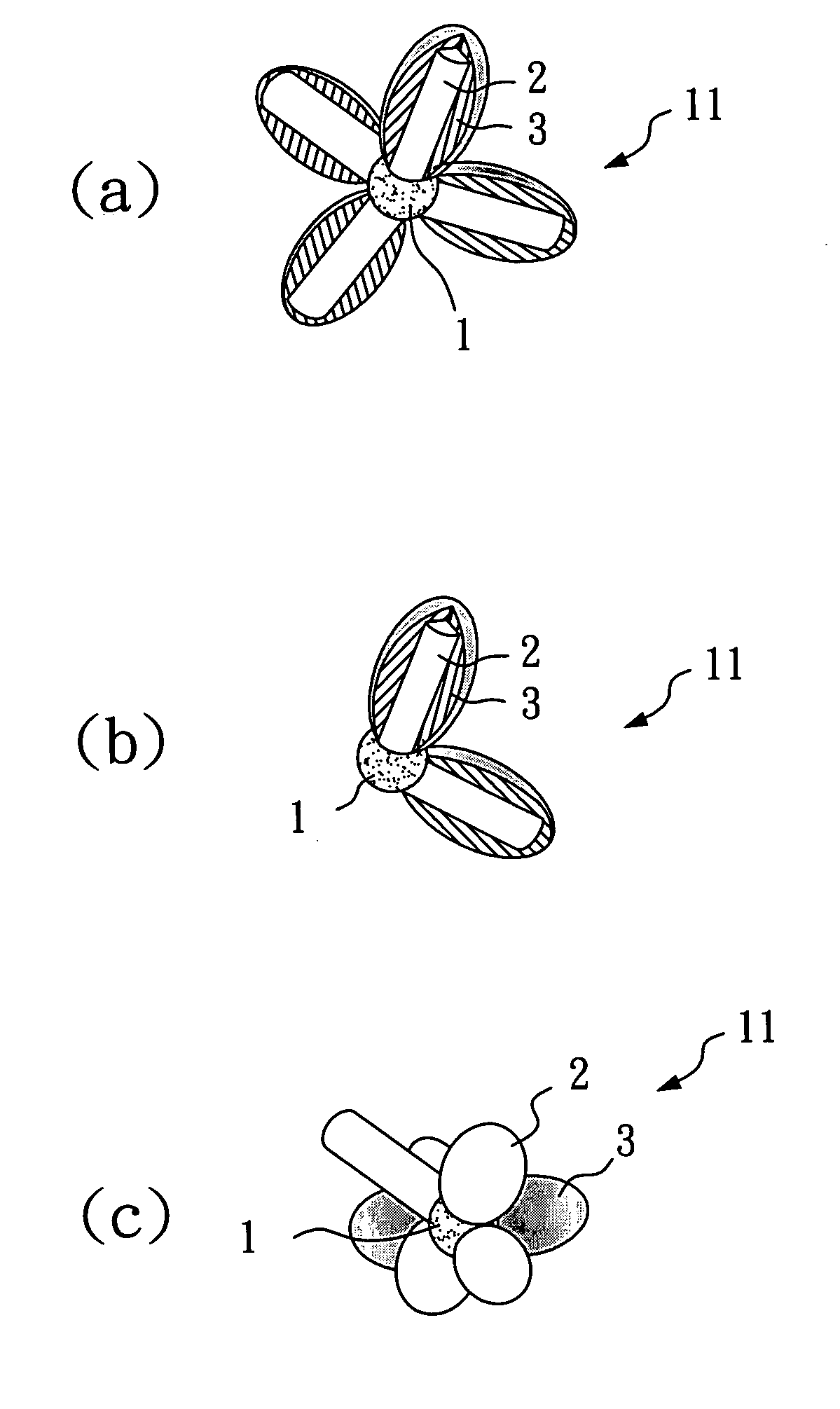Nanocrystal and photovoltaic device comprising the same
a photovoltaic device and nano-crystalline technology, applied in the field of nano-crystalline materials, can solve the problems of long operating life of solar cells, high equipment cost, high manufacturing cost, etc., and achieve the effect of effectively converting light energy into electric energy and high light absorption efficiency
- Summary
- Abstract
- Description
- Claims
- Application Information
AI Technical Summary
Benefits of technology
Problems solved by technology
Method used
Image
Examples
embodiment 1
[0036]With reference to FIGS. 1a to 1c, schematic diagrams of a nanocrystal according to the preferred embodiments of the present invention are illustrated. As shown in FIGS. 1a to 1c, the nanocrystal comprises a core 1, a first shell 2, and a second shell 3. In this embodiment, the core 1 is composed of ZnSe semiconductor with a structure of a quantum dot, the first shell 2 is composed of a CdSe semiconductor, and the second shell 3 is composed of a PbSe inorganic material. Therefore, the nanocrystal 11 of this embodiment includes three materials with different absorption wavelengths. The wavelength of the absorption light of the ZnSe semiconductor is in the range of ultraviolet. The wavelength of the absorption light of the CdSe semiconductor is in the range of visible light. The wavelength of the absorption light of the PbSe inorganic material is in the range of infrared light.
[0037]As shown in FIG. 1a, the shape of the nanocrystal 11 is a tetrapod. The first shell is grown and f...
embodiment 2
[0046]FIGS. 3 to 5 shows photovoltaic devices 100, 200, and 300 according to the preferred embodiments of the present invention. As shown in FIGS. 3 to 5, the photovoltaic devices 100, 200, and 300 mainly comprise a photoactive layer having plural nanocrystals therein, a flexible top substrate 20, and a flexible bottom substrate, wherein the photoactive layer is disposed between the top substrate 20 and the bottom substrate 30.
[0047]In this embodiment, the photoactive layer contains 85 wt % of nanocrystals 11, and 15 wt % of Poly(3-hexylthiophene) (P3HT) as the organic conductive material. As shown in FIGS. 3 to 5, the top substrate 20 includes a substrate 21 and a first electrode 22. The bottom substrate 30 includes a substrate 31, a second electrode 32, and a carrier transfer layer 33. In this embodiment, the first electrode is a cathode composed of aluminum, the second electrode is an anode composed of indium-tin oxide, and the material of the carrier transfer layer 33 is a combi...
PUM
| Property | Measurement | Unit |
|---|---|---|
| Fraction | aaaaa | aaaaa |
| Fraction | aaaaa | aaaaa |
| Percent by mass | aaaaa | aaaaa |
Abstract
Description
Claims
Application Information
 Login to View More
Login to View More - R&D
- Intellectual Property
- Life Sciences
- Materials
- Tech Scout
- Unparalleled Data Quality
- Higher Quality Content
- 60% Fewer Hallucinations
Browse by: Latest US Patents, China's latest patents, Technical Efficacy Thesaurus, Application Domain, Technology Topic, Popular Technical Reports.
© 2025 PatSnap. All rights reserved.Legal|Privacy policy|Modern Slavery Act Transparency Statement|Sitemap|About US| Contact US: help@patsnap.com



